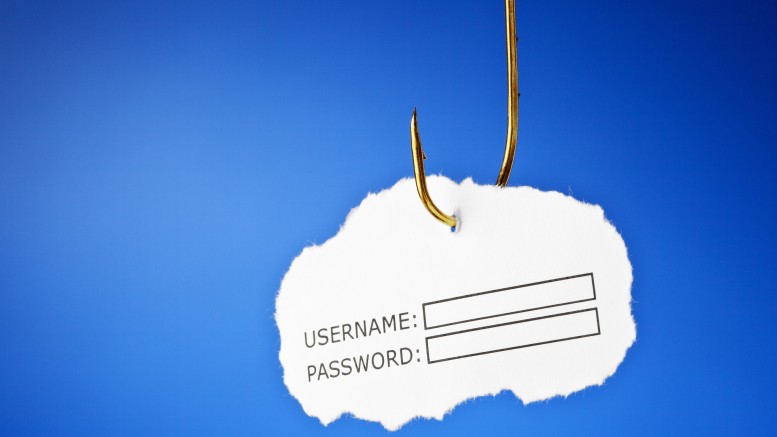In the wake of this year’s devastating data breach at the U.S. Office of Personnel Management (OPM), calls for heightened IT security at federal government agencies intensified. Blame for the breach points everywhere from Katherine Archuleta, the Director of OPM, down to the agency’s stunning lack of proper encryption of sensitive data.
The outrage is understandable. Cyber security researchers call the OPM breach – attributed to Chinese state-sponsored attackers – “the largest hack of government data in the country’s history”. More than 21 million people suffered the loss of personally identifiable information like social security numbers. But the potential damage to national security is immeasurable. Among the information pilfered during the breach was detailed security-clearance-related background information. Quite a boon to a foreign intelligence agency.
And the damage didn’t end once the breach was disclosed. In the months following disclosure, many of the breach victims were targeted with phishing scams by cyber criminals. In a cruel case of insult to injury, the phishing emails offered help in recovering from the breach, but lured recipients to malicious sites.
Phishing Attacks Are a Serious Cyber Threat
The OPM data breach is relevant to us here at Lieberman Software. We’re committed to protecting access to systems with highly sensitive data at many U.S. government agencies. We’re on the front lines, if you will, of a fight against emerging and persistent cyber threats.
IT security staff at these agencies are on guard against the now pervasive tactic of spear-phishing. In this targeted social engineering attack, hackers use emails that masquerade as trusted information to fool recipients into revealing confidential data. Phishing succeeds because, unlike some other attack methodologies, it exploits human interactions. And humans make mistakes.
Inside government agencies, phishing attacks seek employee Common Access Card (CAC) credentials and powerful privileged account passwords. The attacks usually appear to originate from a legitimate source — a member of the IT staff or a supervisor, for example — duping an employee into revealing passwords. From there, the hacker uses the stolen privileged account credentials to leapfrog from machine to machine, map the IT infrastructure, and steal private data.
Privileged accounts hold elevated permission to access files, install programs, and change system configurations. They exist throughout the IT infrastructure. They’re on operating systems, business applications, databases, Web services and network appliances.
However, it’s a dirty secret of the IT world that privileged accounts are often surprisingly vulnerable. Passwords used to access these accounts may remain unchanged for months or even years, and are often shared among many people. That’s why if even one of these passwords is exploited by a phishing attack, the ramifications can be widespread, difficult to track and devastating.
Mitigating the Phishing Threat
Removing shared and static credentials from your network is not as daunting as it may seem. But first you must find them. Start with a comprehensive audit of your network to locate exactly where these privileged accounts exist. In a large government agency, there are typically thousands of such accounts. That includes stale accounts once used by former employees and contractors. Each account represents a potential point of vulnerability. So it’s crucial that they be identified and tracked.
Once cataloged, you need to determine if each of these logins are unique and cryptographically complex. If not, that’s a potential security hole that must be closed.
You must also delegate and track access to these accounts. This ensures that they’re available only to audited users, on a need to know basis, for a limited time. The important point is — know who used them and for what purpose.
Finally, to be effective, tracking and changing privileged passwords must be a continuous process. That way, there are no static passwords residing on sticky notes, shared spreadsheets or in an employee’s head. And less chance of a crafty spear-phishing exploit gaining anonymous, peer-level network access.
Privileged identity management solutions exist that automate the process of discovering, strengthening and auditing privileged credentials so that your IT staff can save time for other projects. The choice of how to regain control of your privileged identities is yours to make. But for the sake of your organization’s private data, the time to act is now. The OPM data breach proved that.
back to: Data Retention Law Page

viagra doses 200 mg viagra for sale cheap generic viagra
viagra prescription online buy viagra generic generic viagra cost
what is cialis cheap cialis cialis daily
online doctor prescription for viagra viagra without a doctor prescription how much is viagra
over the counter ed drugs best medicine for ed new ed treatments
viagra over the counter walmart viagra canada viagra online
generic name for viagra canadian pharmacy viagra viagra cost
viagra walmart cheap ed pills viagra coupon
where to get viagra cheap viagra best place to buy viagra online
buy viagra online usa cheap viagra price of viagra
viagra without a prescription generic viagra ed drugs
remedies for ed ED Pills cheapest ed pills
medications for ed Cheap Erection Pills ed drugs online from canada
legal to buy prescription drugs from canada generic ed pills natural cures for ed
real cialis without a doctor’s prescription cialis generic cialis tadalafil
cost of cialis cialis for sale cialis cost
compare ed drugs canada ed drugs ed trial pack
online drug store
erection pills drug prices comparison ed treatment
ed for men
ed pills online canada ed drugs natural ed
impotence pills
best over the counter ed pills ed drugs over the counter ed clinics
medication for ed dysfunction
https://amoxicillingeneric500.com/ amoxicillin capsules 250mg
https://prednisonegeneric20.com/ prednisone 20mg prescription cost
https://amoxicillingeneric500.com/ order amoxicillin uk
https://zantacgeneric150.com/ zantac coupons
https://zithromaxgeneric500.com/ zithromax 250
cash advance instant online payday loans
buy sildenafil online sildenafil pharmacy